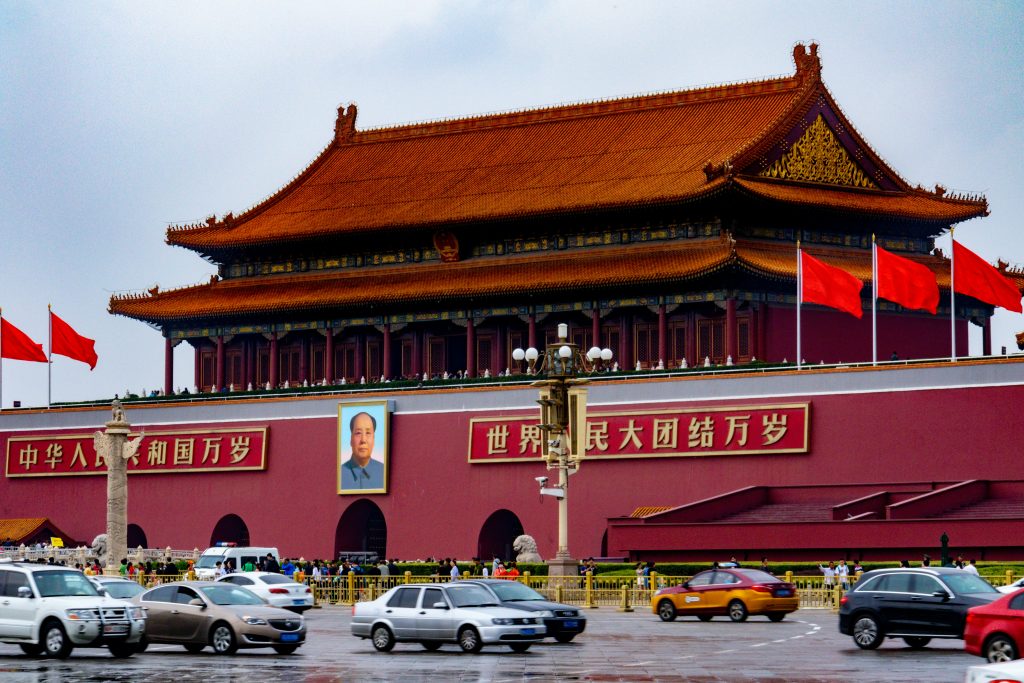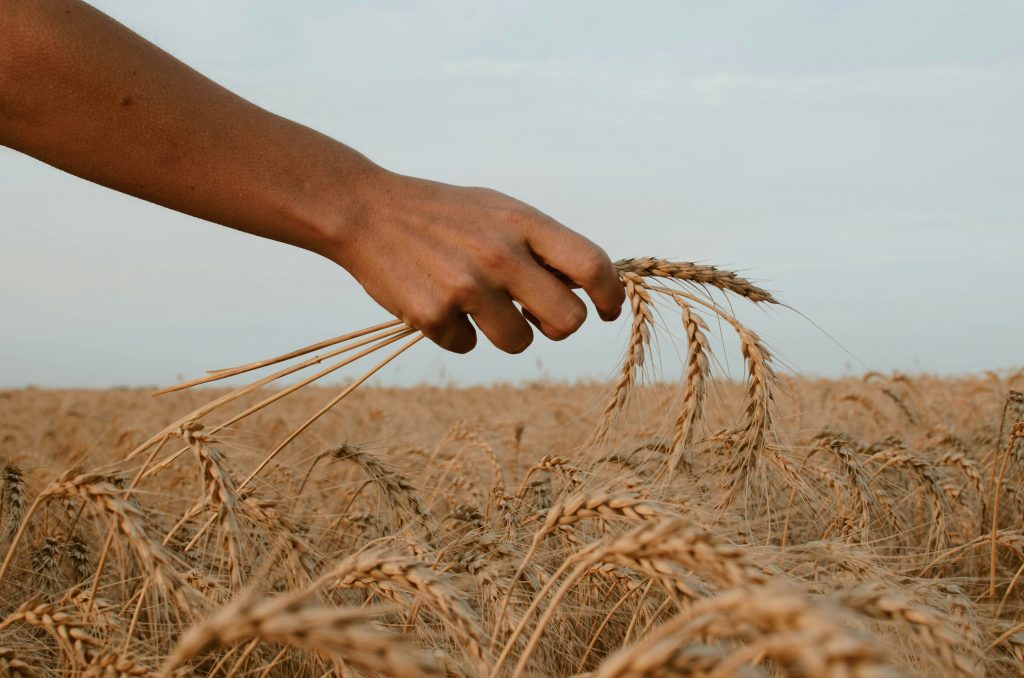
China’s leadership is making a concerted effort to bolster its manufacturing sector, particularly focusing on higher tech industries like batteries, EVs, and solar panels. However, this strategy appears to be encountering some challenges.
Domestically, Chinese consumers are known for their frugality, while globally, there’s growing resistance to Chinese products. This trend is reflected in our forecast report, which highlights the imposition of duties on steel and other Chinese goods in various countries.
Recent steel production data underscores this declining momentum. With global steel prices low, Chinese manufacturers are finding it difficult to maintain profitability. A recent BHP report echoes this sentiment, suggesting that steel production in China may have peaked and is now poised for a decline.
Back from summer holidays we start to check all the main indicators for the Dry bulk trade. Our forecast report gives you the stories that are shaping demand.
Macro economic
A complaint has been filed with the WTO by China over the EU’s anti-subsidy investigation on imported battery electric vehicles from China. The subsequent imposition of provisional countervailing duties has also been challenged. The two sides have until early November to try and resolve their differences. After which, the provisional tariffs become official. Investigations into French cognac and European pork exports have since been launched by China raising fears of a damaging trade war with the EU.
An IMF country focus article said that China’s growth will remain resilient at around 5% in 2024. This is despite the continued property sector adjustment. However, it was noted that China has relied too much on investment as opposed to consumption. Growth is expected to slow to around 3.3% in 2029. Diminishing productivity and an aging population risk restricting this. The article argues that the country’s service sector is an underexploited driver of growth. More people can be put to work by expanding the sector, especially younger people. GDP could be raised by an additional 1 percentage point through market-based structural and pension reforms.
China’s industrial output growth in July slowed to a four-month low of 5.1%. This aggravated concerns about a continued manufacturing slowdown. China’s July official manufacturing PMI remained in contraction mode for the third month.
Steel
The latest July 2024 crude steel production data was released from the World Steel Association. Global output across 71 reporting countries was at 152.8 million tonnes. This was down 4.7% year-on-year. Chinese output for the month was estimated at 82.9 million tonnes. This represents a fall of 9.0% year-on-year. Outside China, other major producers recorded year-on-year losses in July. These included Iran (-18.7%), Japan (-3.8%), South Korea (-3.4%), and Russia (-3.1%). There were year-on-year gains in Brazil (+11.6%), India (+6.8%), the EU (+5.7%), Turkey (+4.0%), and the US (+2.1%).
Chinese crude steel output in the first seven months of 2024 was estimated by the WSA at 613.7 million tonnes. This was down 2.2% year-on-year. Over the same period India’s output totalled 86.4 million tonnes. This was up 7.2% year-on-year. Meanwhile, EU production totalled 78.0 million tonnes. This was up 1.5% year-on-year.
A challenging future for the iron ore market has been set out in BHP’s latest commodity outlook. Chinese steel production has plateaued and is expected to decline in coming years. The real-time cost support for iron ore prices was estimated by the miner to have remained in the range of $80 to $100 per tonne on a 62% Fe CFR basis, in the first half of this year. However, the cutoff CFR price for many high-cost producers is above $90. This means that around 130-140 million tonnes/year could become too expensive to mine. A further 30-40 million tonnes are at risk if CFR prices fall towards $80/tonne. (This comprises roughly 75% seaborne and 25% domestic Chinese ores).

BHP’s outlook for coking coal is also somewhat negative. A mild surplus is forecast for 2025. However, the supply of premium coals should stay relatively tight. BHP believes that coking coal-based blast furnace iron making is unlikely to be displaced at scale by emergent technologies for decades. This is given that it accounts for 70% of global steel capacity today.
25% tariffs on Chinese steel and aluminium will be imposed by the Canadian government. 100% tariffs on Chinese electric vehicles will also be imposed. These are effective 1 October.
China’s crude steel production in July slumped to 82.94 million tonnes according to official data. This was down 9.5% from June and the lowest level since December 2023. Total output for the first seven months of this year was 613.72 million tonnes. This was down 2.2% year-on-year. Chinese steelmakers are also struggling with low steel prices. The benchmark steel rebar contract on the Shanghai Futures Exchange fell to its lowest level in more than four years in mid-August. This was down 24% from the start of the year.
Chinese finished steel exports in July totalled 7.827 million tonnes according to customs data. This was down month-on month for the second straight month but still up 7.1% year-on-year. Over the first seven months of 2024, finished steel exports totalled 61.227 million tonnes. This was up 21.8% year-on-year.
India’s steel demand is expected to grow by 8% annually in 2024 and 2025. This is driven by continued growth in infrastructure development according to India’s Steel Ministry.
Last month, we reported that India’s Steel Ministry wanted to establish central buying of coking coal imports. However, India’s steel sector had yet to get on board with the plan. It now appears that the plan has been abandoned due to differences among mills over the grades they need.
A country-specific import quota was proposed by the Indian government in April. This was to cap annual imports of low ash metallurgical coke at 2.85 million tonnes for one year. The move was to protect local coke producers who complained about rising imports. However, the Indian Steel Association is now reported to have lobbied the federal trade ministry to relax the import restrictions. It argues that local coke production is not sufficient to meet the needs of steel mills. A consultation process with stakeholders is now expected to be started by the trade ministry.
Power Coal
China’s National Reform and Development Commission released a three-year plan to upgrade the country’s power transmission system, ramp up renewables and help meet the goal of reaching a peak in carbon emissions before 2030. It also called for creating standards for next-generation coal-fired power, reducing emissions from coal power plants and blending coal with lower-carbon fuels.
Chinese customs data reported a jump in July coal imports to 46.23 million tonnes, a seven-month high and up 18% year-on-year. Shipments from Indonesia, Mongolia and Australia all rose but Russia exports were down slightly on payment difficulties and logistical constraints. Meanwhile, China’s domestic coal production in July totalled 390.37 million tonnes, up 2.8% year-on-year. However, average daily output for the month was down 6.8% from June.
Denmark’s Orsted is to shut down its last coal-fired power units at the end of August. This is its final major step in meeting its target of a 99% green share of energy generation by 2025. The company is to close its coal-fired power plant in Esbjerg. Two coal-fired units at its Studstrup and Kyndby power stations will also be closed. Coal is still held as a reserve fuel at Studstrup’s unit 3 by Orsted. This is while a wood pellet silo is being rebuilt. This is due to be completed by the end of the year.
Coal’s share of US energy generation will shrink to an all-time low of 16.1% in 2024. This is due to lower utilisation rates and ongoing capacity retirements according to the US Energy Information Administration. 2024 coal production was forecast at 499 million short tons. This was down 14.2% from 2023. Coal production in 2025 was expected to fall by another 5% to 474 million short tons. The EIA also commented that US coal-fired power plants will probably have to pull from their inventories in 2025. This is as coal production decreases at a faster rate than power sector coal consumption.
Aluminium
The International Aluminium Institute reported that global primary aluminium production in July rose 2.4% year-on-year. The total was 6.194 million tonnes, with 59.6% produced in China. Global production in the first seven months of this year totalled 42.074 million tonnes. This was up 3.8% year-on-year. The IAI also reported that global alumina production in July totalled 12.155 million tonnes. This was down 0.1% year-on-year. Global alumina production from January to July 2024 totalled 82.197 million tonnes. This was up 2.1% year-on-year.
Grain
The US Department of Agriculture’s August forecast updates contained only minor adjustments to 2024/25 season export trade forecasts. Looking across all the principal commodities (wheat, coarse grains, rice, soyabeans, and soyabean meal), net changes to the 2024/25 season saw an overall export trade increase of 1.29 million tonnes, a rise of 0.17%.
Australian and Ukrainian 2024/25 wheat export forecasts were both marked up by 1.0 million tonnes on expected larger crops. This was partly offset by a 0.5 million tonnes cut in the EU wheat export estimate. Several months of heavy rainfall in France have reduced quality and yield prospects for the EU’s largest wheat producer. The US maize export forecast for 2024/25 was raised by 1.90 million tonnes on larger supplies and price competitiveness. However, this was offset by trims to EU, Ukraine and Russian maize export forecasts based on expected smaller crops.

Egypt’s state grains buyer, the General Authority for Supply Commodities, announced in early August a massive tender for 3.8 million tonnes of wheat to cover imports between October 2024 and April 2025. The country usually buys in tenders under a million tonnes and for shorter duration. The shift in tactics appears to be an effort to take advantage of the current dip in wheat prices.
Ukraine’s agriculture ministry reported that grain exports in the 2024/25 July-June season had reached 6.4 million tonnes by 23 August up from 3.8 million tonnes by the same date in the previous season.
Fertiliser
The International Fertiliser Association has released its latest medium-term outlook. It notes that, after declining for two consecutive years, global fertiliser use is forecast to increase by 4% in fertiliser year 2023 and by3% in fertiliser year 2024. The recovery was primarily due to improved fertiliser affordability. Global fertiliser use is expected to continue expanding in the medium term, but at a rate decreasing from 2.2% in FY 2025 to 1.5% in FY 2028. Lain America and South Asia are expected to be the main engines of global growth in the medium term.
Canada – Ten days ahead of rail labour disruption on the two main networks run by CN Railway and Canadian Pacific Kansas City, Fertiliser Canada warned that the dispute was already adversely impacting fertiliser shipments. The two rail operators have issued embargoes immediately halting certain fertiliser shipments ahead of the worker lockout that began on 22 August.
Forestry
Finland exported 3.9 million cubic metres of softwood sawn timber in the first seven months of 2024, down 10% year-on-year.
The Finnish Natural Resources Institute reported that roundwood harvested in June was 4.1 million cubic metres, an increase of 4% year-on-year. However, industrial roundwood felling in the first half of 2024 totalled 29.4 million cubic metres, a drop of 1.2 cubic metres from the same period last year and a 5% fall from the five-year average.
The US Department of Commerce announced that anti-dumping and countervailing duties on Canadian softwood lumber products will rise from 7.99% to 14.54%, to the consternation of British Colombian wood processors. The US views the Canadian Crown-owned timberlands system as a form of subsidy, given that most US timber comes from privately-owned woodlands. However, the National Association of House Builders in the US called on the government to suspend the tariffs due to their detrimental effect on housing affordability which was already near a historic low.
Privately-owned housing starts in July were at a seasonally adjusted annual rate of 1,238,000 according to the US Census Bureau, down 16.0% year-on-year and down 6.8% on the revised June estimate.
